In rural Cambodia, a child fills her water bottle from a pristine water kiosk – a scene unimaginable just years ago. This transformation stems from 1001 Fontaines’ innovative approach to clean water access. By empowering local entrepreneurs to operate water treatment facilities, this social enterprise has created a sustainable model that delivers safe drinking water to over 1 million people daily. Their success demonstrates how blending social impact with business acumen can solve one of humanity’s most pressing challenges. Let’s dive into how 1001 Fontaines is reshaping rural water distribution through entrepreneurship, technology, and community engagement.
with 🎙️ Amandine Muret, Chief Development Officer at 1001 Fontaines
Take-home message (in 2 long sentences 😅):
1001 Fontaines transforms water accessibility by establishing micro-enterprises that bottle and deliver safe drinking water directly to rural households, essentially creating “bottled water as a utility” that serves vulnerable populations. What makes them special is their laser focus on quality and convenience for drinking water only—ensuring each person gets their vital 1.5 liters per day through an affordable, entrepreneur-driven model that’s sustainable where traditional piped networks have repeatedly failed.
In this episode, you’ll learn:
🚰 How 1001 Fontaines provides bottled water as a utility service in rural communities and what differentiates their approach from traditional centralized water systems
🏗️ Why decentralized water kiosks with local entrepreneurs create sustainable access to safe drinking water where conventional pipe networks fail to deliver quality and coverage
💧 What makes their business model effective through standardization, local ownership, and focus on providing affordable, quality drinking water rather than comprehensive domestic water supply
🌏 Where bottled water as a utility service fits within global water policy frameworks and how it complements rather than competes with traditional infrastructure approaches
💼 If scaling through shared expertise with local partners and strategic engagement with international institutions could transform how safe drinking water is delivered to vulnerable populations worldwide
Let’s get into it!
The Genesis of Water Entrepreneurship

In rural communities across developing nations, access to clean drinking water remains an enduring challenge. It was within this context that 1001 Fontaines identified a groundbreaking opportunity – leveraging entrepreneurship to create sustainable water access solutions while generating local economic value.
The organization’s founders recognized that traditional aid-based approaches often failed to create lasting impact. They observed that while infrastructure could be built through donations, long-term maintenance and operations frequently faltered without sustainable business models. This insight led to a pivotal realization: treating water access as an entrepreneurial opportunity rather than purely a charitable cause could create more resilient solutions.
At its core, the model identifies and empowers local entrepreneurs to operate small-scale water treatment facilities. These entrepreneurs take ownership of the entire value chain – from water treatment to distribution and sales within their communities. The approach transforms what is typically viewed as a public service into a viable micro-enterprise.
What makes this model particularly innovative is its dual focus on social impact and business sustainability. The model aligns perfectly with the growing recognition that entrepreneurship may be the missing link to shape the future of the water industry. By treating beneficiaries as customers rather than aid recipients, it creates accountability and ensures service quality. The entrepreneurs have a direct incentive to maintain their equipment and deliver consistently clean water, as their livelihood depends on customer satisfaction and retention.
The organization discovered that successful water entrepreneurship required three key elements: appropriate technology that could be operated locally, business training and support for entrepreneurs, and quality control systems to ensure consistent water safety. This combination addressed both the technical and human aspects of sustainable water access.
Through this innovative approach, 1001 Fontaines demonstrated that social entrepreneurship could bridge the gap between charitable intentions and sustainable impact in water access. The model proved that when properly structured, water distribution could simultaneously serve social needs and create economic opportunities in rural communities.
Technology Meets Social Innovation

At the core of 1001 Fontaines’ success lies an ingeniously simple yet effective water treatment system paired with a sustainable business model that empowers local entrepreneurs. The technology utilizes a four-stage purification process that combines UV treatment, filtration, and safe water storage – all powered by solar energy to minimize operational costs and environmental impact.
The system’s design prioritizes reliability and ease of maintenance, enabling entrepreneurs with limited technical backgrounds to operate the facilities effectively. Critical components are standardized and sourced locally where possible, reducing dependency on imported parts and keeping maintenance costs manageable. The entire setup occupies a modest footprint, typically housed in a small building that serves as both treatment facility and distribution center.
What truly sets the model apart is how the technology integrates with the entrepreneurial framework. Each facility operates as a micro-business, with entrepreneurs purchasing raw materials and selling treated water at prices affordable to rural communities – typically 50-70% below alternative options. The revenue model ensures sustainability while maintaining accessibility: entrepreneurs earn sufficient income to support their families while keeping prices within reach of their customers.
Entrepreneurs receive comprehensive training in both technical operations and business management. The curriculum covers everything from basic maintenance and water quality testing to financial planning and customer service. This dual focus on technical and business skills creates a foundation for long-term success.
To ensure consistency and quality, 1001 Fontaines implemented a remote monitoring system that tracks key performance metrics across all facilities. This data-driven approach allows for rapid identification of potential issues and enables continuous improvement of both technology and operations. The organization can quickly deploy support when needed while giving entrepreneurs the autonomy to run their businesses.
This elegant fusion of appropriate technology and entrepreneurship creates a self-reinforcing cycle: the simplified technical system makes entrepreneurship accessible, while the business model generates sufficient revenue to maintain the technology. The result is a sustainable solution that delivers safe water while creating economic opportunities in rural communities.
The Entrepreneur Selection Process
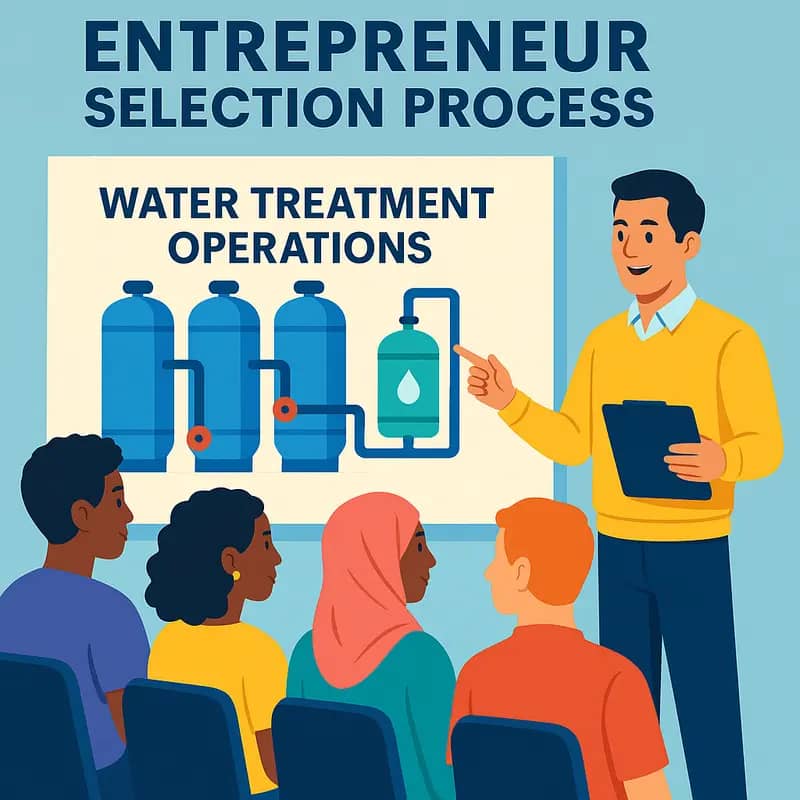
At the heart of 1001 Fontaines’ successful model lies a rigorous entrepreneur selection and training process that transforms local community members into water facility operators and business owners. The organization employs a multi-stage approach that identifies individuals with both the entrepreneurial drive and community-minded vision necessary to sustainably operate these vital water enterprises.
The selection process begins with community engagement, where 1001 Fontaines works closely with village leaders to identify potential candidates. Key criteria include demonstrated leadership abilities, basic business acumen, and deep community roots. More importantly, candidates must show genuine commitment to improving their community’s wellbeing through sustainable water access.
Selected entrepreneurs undergo an intensive six-month training program that balances technical expertise with business management skills. The curriculum covers water treatment processes, equipment maintenance, quality control protocols, and financial planning. Entrepreneurs learn to operate specialized filtration systems while developing abilities in inventory management, pricing strategies, and customer service.
A unique aspect of the training is its emphasis on the social enterprise mindset. Entrepreneurs must grasp the delicate balance between generating sufficient revenue for sustainability while keeping water affordable for all community members. This involves understanding tiered pricing models and developing targeted marketing approaches for different customer segments.
The organization maintains ongoing support through a mentorship program where experienced entrepreneurs guide newcomers through their first year of operations. Regular monitoring and performance evaluations ensure quality standards are maintained while identifying areas for additional support or training.
This comprehensive approach to entrepreneur development has proven instrumental in creating sustainable water enterprises. As discussed in Is Entrepreneurship the Missing Link to Shape the Future of the Water Industry?, the success rate of these local water entrepreneurs significantly exceeds typical small business survival rates, demonstrating the effectiveness of 1001 Fontaines’ selection and training methodology.
Financial Sustainability Model
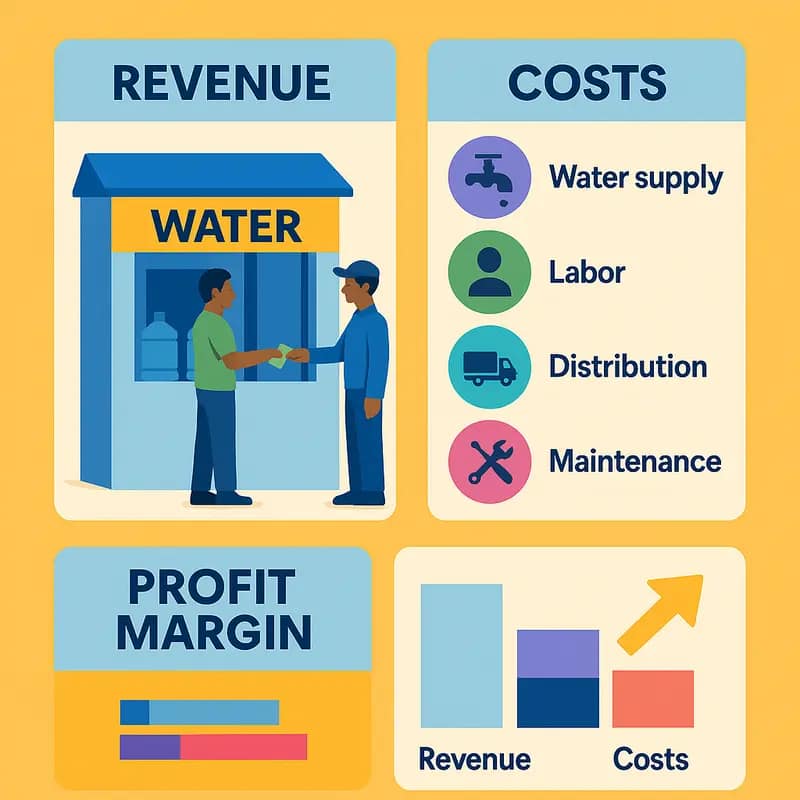
At the core of 1001 Fontaines’ success lies a carefully engineered financial framework that balances social impact with business viability. The model operates on a three-tiered structure that ensures sustainability through local ownership, appropriate pricing, and operational efficiency.
Local entrepreneurs purchase water treatment facilities through microfinance arrangements, typically paying back their loans over 4-5 years. This ownership model creates strong incentives for maintaining equipment and growing the business. The initial investment is carefully calculated to ensure monthly loan payments remain manageable against projected revenues.
Pricing strategies reflect local economic conditions while maintaining profitability. Water is sold at 50-60% below commercial bottled water prices, making it affordable for rural communities while generating sufficient margins to cover operations, maintenance, and loan payments. A typical facility serves 3,000-4,000 people, with households spending approximately 2-3% of their monthly income on clean water – aligned with WHO affordability guidelines.
Operational sustainability is achieved through standardized processes and economies of scale. Bulk purchasing of consumables, shared distribution networks, and centralized quality monitoring reduce costs. Additionally, entrepreneurs receive ongoing technical support and business coaching to optimize their operations and expand their customer base.
To protect against market fluctuations, entrepreneurs maintain cash reserves equivalent to three months of operating expenses. This buffer ensures service continuity during seasonal demand changes or unexpected maintenance needs. The model also incorporates a small percentage of revenues into a community development fund, reinforcing local stakeholder engagement.
A particularly innovative aspect is the cross-subsidization between urban and rural operations. Strategic partnerships with urban businesses and institutions provide higher-margin revenue streams that help subsidize rural distribution networks, creating a more resilient overall system.
This comprehensive approach to financial sustainability has proven remarkably successful, with over 90% of water facilities achieving operational self-sufficiency within two years of launch.
Quality Control and Monitoring
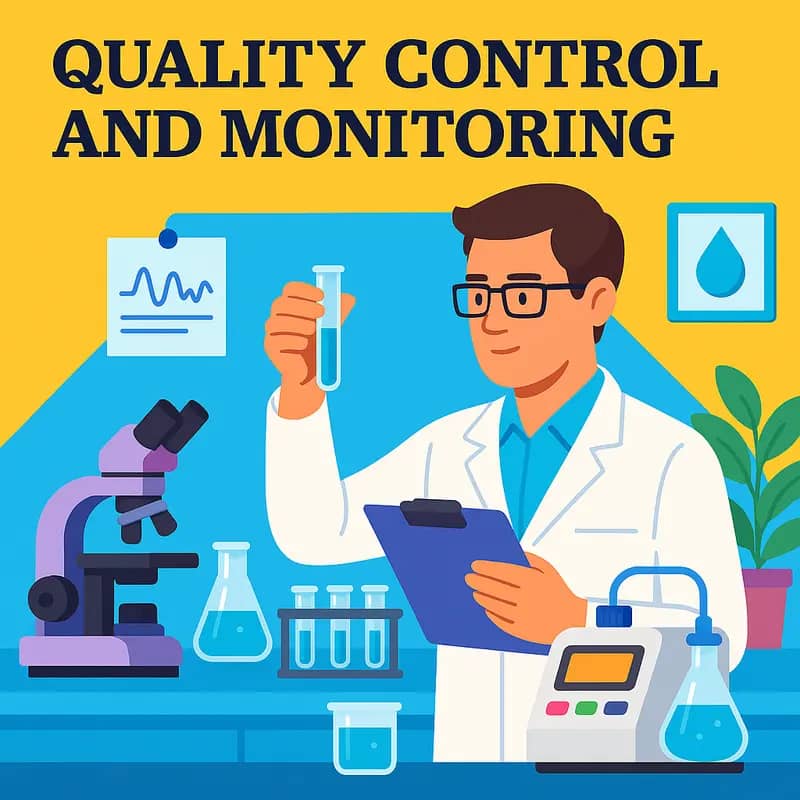
At the heart of 1001 Fontaines’ mission lies a rigorous quality control system that ensures consistently safe drinking water across all operations. The organization implements a multi-layered monitoring approach that combines automated testing, manual verification, and third-party validation.
Water quality testing begins at the source, with comprehensive analysis of raw water characteristics to optimize treatment protocols. Each water kiosk employs a standardized treatment process incorporating filtration, UV disinfection, and mineral balancing. Operators conduct daily water quality checks using calibrated testing equipment to verify key parameters including turbidity, pH, and residual chlorine levels.
A centralized quality assurance team regularly collects samples from each site for laboratory analysis. These tests screen for microbiological contaminants, heavy metals, and other potential pollutants using methods aligned with WHO drinking water guidelines. The organization maintains detailed digital records of all quality data, enabling rapid identification of any concerning trends.
Beyond internal controls, 1001 Fontaines partners with accredited laboratories for quarterly independent verification. This external oversight provides an additional layer of scrutiny and maintains transparency with stakeholders. The quality control system also includes routine audits of equipment maintenance, operator practices, and documentation at each kiosk.
Crucially, quality monitoring extends to the point of consumption through regular sampling at household storage containers. This last-mile verification helps ensure water quality is maintained throughout the distribution chain. When quality issues arise, a structured response protocol triggers immediate investigation and corrective actions.
The organization leverages technology to strengthen its quality management, as highlighted in a recent case study on water quality data management. Cloud-based monitoring systems enable real-time tracking of key parameters and automated alerts for any deviations from specified standards. This data-driven approach allows for proactive quality management while building trust with communities served.
Community Impact Assessment

The measurable impact of 1001 Fontaines’ water distribution model reveals compelling evidence of both health improvements and economic benefits in served communities. Long-term epidemiological studies conducted across program sites demonstrate a 50% reduction in waterborne diseases among children under five years old in villages with operational water kiosks. This reduction in illness translates to increased school attendance rates, with participating communities reporting 30% fewer sick days among primary school students.
Beyond direct health benefits, the economic ripple effects are substantial. Each water kiosk creates an average of three full-time local jobs, while also supporting 5-7 part-time distribution positions. These employment opportunities particularly benefit women, who make up 65% of kiosk operators. The average kiosk operator earns 2.5 times the local minimum wage, enabling them to invest in their families’ education and future enterprises.
A cost-benefit analysis reveals that for every $1 invested in the program, communities receive $4.30 in economic value through reduced healthcare costs, increased productivity, and local job creation. The model’s emphasis on local entrepreneurship has proven particularly effective in ensuring long-term sustainability. After five years of operation, 92% of established kiosks remain financially self-sufficient, requiring no external subsidies.
Most significantly, household surveys indicate that families in served communities spend 60% less on medical treatments related to waterborne illnesses. This cost reduction allows families to redirect resources toward education, nutrition, and small business development. The program’s success in creating both health and economic improvements has attracted attention from government agencies and development organizations, leading to partnerships that are helping scale the model to new regions.
Scaling Across Borders
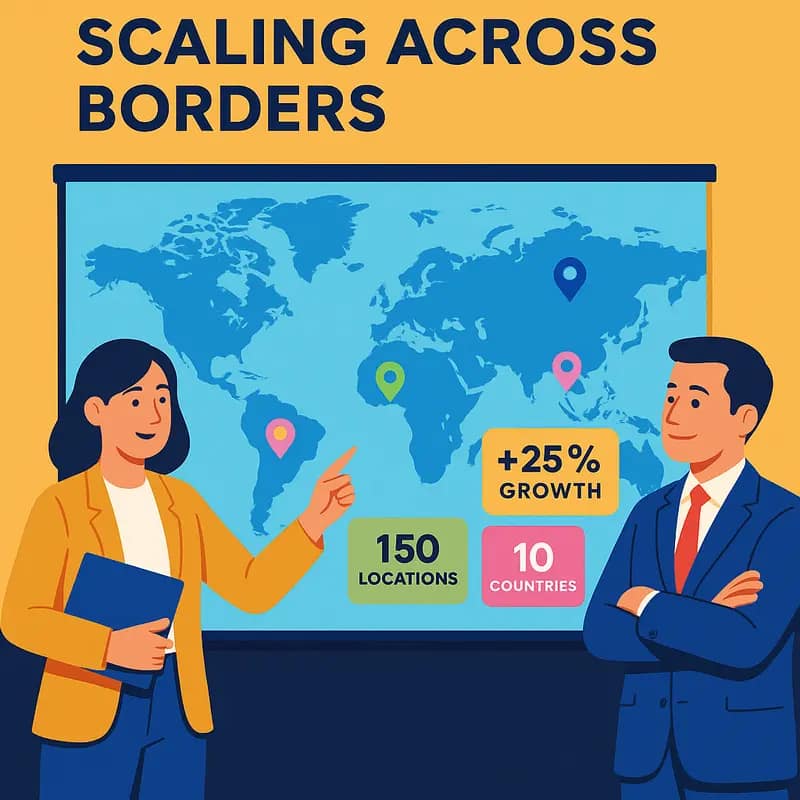
The success of 1001 Fontaines’ entrepreneurial water access model has catalyzed its expansion beyond Cambodia into multiple countries, each presenting unique challenges and opportunities for adaptation. The organization’s scaling strategy emphasizes local contextualization while maintaining core operational principles.
In Madagascar, 1001 Fontaines modified its approach to address the distinctive infrastructure limitations and cultural preferences of rural communities. The enterprise adapted its water treatment processes to handle the region’s specific contaminants while building partnerships with local organizations to strengthen distribution networks. This expansion proved that the model could flex without compromising its fundamental social impact goals.
Myanmar’s implementation showcases how political complexities influence scaling strategies. Here, 1001 Fontaines cultivated relationships with regional authorities and community leaders to navigate regulatory frameworks while empowering local entrepreneurs. The organization’s ability to maintain operations despite political instability demonstrates the resilience of its decentralized approach.
A particularly noteworthy aspect of the cross-border expansion has been the knowledge transfer between different country operations. Successful innovations in one region, such as improved solar power integration in Cambodia, have been systematically adapted and implemented in other locations. This learning ecosystem has accelerated the organization’s ability to optimize operations across diverse contexts.
The scaling process has also revealed the importance of flexible financing mechanisms. By developing region-specific funding models that combine microfinance, community investment, and strategic partnerships, 1001 Fontaines has created sustainable pathways for expansion that don’t rely solely on traditional aid or philanthropy.
Perhaps most significantly, the organization’s success in scaling across borders has validated the universal applicability of its entrepreneur-driven model. Whether in South Asian villages or African rural communities, the core premise of empowering local business owners to serve their communities has proven remarkably adaptable and effective.
Future Innovation Pipeline
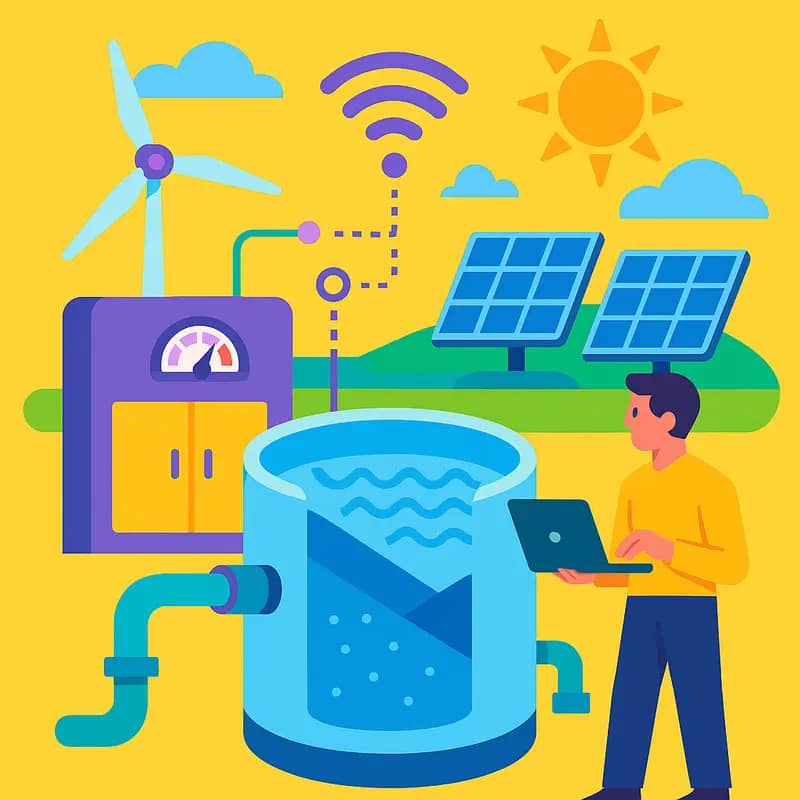
1001 Fontaines is actively pushing technological boundaries to enhance its water distribution model while maintaining its core social mission. Building on its proven entrepreneurship framework, the organization is developing several breakthrough innovations that promise to revolutionize rural water access further.
A key focus area is the integration of smart monitoring systems that leverage IoT sensors to track water quality and system performance in real-time. These sensors will enable local entrepreneurs to proactively maintain their water treatment stations and respond swiftly to any quality issues. The data collected will also help optimize operations and reduce downtime across the network.
The organization is also piloting solar-powered treatment systems designed specifically for remote locations with unreliable electricity access. These systems incorporate energy storage solutions that ensure consistent operation even during cloudy periods. By reducing dependence on grid power, the innovation will significantly lower operating costs while improving service reliability.
On the distribution front, 1001 Fontaines is exploring mobile payment integration and digital tracking systems to streamline revenue collection and delivery logistics. This technology will enable entrepreneurs to manage their businesses more efficiently while providing valuable data on consumption patterns and service quality.
Perhaps most promising is the development of a modular treatment system that can be quickly scaled up or down based on community needs. This flexible approach will allow entrepreneurs to better match capacity with demand while minimizing initial investment costs – a critical factor for expanding into new markets.
The organization is also investing in enhanced training tools, including augmented reality applications that will help entrepreneurs troubleshoot technical issues independently. This innovation aims to reduce dependency on external technical support while empowering local operators.
These technological advances are being carefully balanced with 1001 Fontaines’ commitment to simplicity and sustainability. Each innovation is evaluated not just for its technical merit, but for its ability to enhance the social enterprise model that has proven so successful. By maintaining this dual focus, the organization ensures that technological progress serves its ultimate mission of providing safe, affordable water to rural communities.
The Genesis: From Concept to Community Impact

In the remote villages of Cambodia in 2004, clean drinking water was a rare luxury. This harsh reality sparked the inception of 1001 Fontaines when Chay Lo, a Cambodian engineer, partnered with François Jaquenoud to pioneer a revolutionary approach to rural water access.
The founders recognized that traditional aid models often failed because they neglected long-term sustainability. Their vision went beyond simply installing water treatment systems – they aimed to create a self-sustaining ecosystem where local entrepreneurs could operate and maintain water kiosks while earning a living.
The initial pilot in Bradal village faced numerous challenges. Technical hurdles arose in adapting UV purification technology to work reliably in areas with unstable electricity. Cultural barriers existed too, as villagers were accustomed to drinking untreated water and questioned paying for something they previously got for free.
Yet the team persisted, refining their approach through trial and error. They developed a simple but effective water treatment process that local operators could manage with minimal training. More importantly, they established a pricing model that made clean water affordable for villagers while generating enough revenue to sustain operations.
The breakthrough came when they successfully demonstrated that a water kiosk could provide safe drinking water at just $0.01 per liter – less than half the cost of boiling water at home. This economic advantage, combined with growing awareness of waterborne diseases, gradually won community trust.
By focusing on entrepreneurship rather than charity, 1001 Fontaines created a model where success bred success. Each profitable kiosk became a proof point, inspiring neighboring villages to replicate the system. Early entrepreneurs became trainers and advocates, organically scaling the initiative through peer-to-peer influence.
This genesis story exemplifies how social entrepreneurship can bridge the gap between humanitarian needs and sustainable solutions. As explored in how to use a costly material to bring membrane treatment costs down, innovative business models often unlock possibilities where traditional approaches fall short.
The Business Model: Entrepreneurship Meets Social Impact

At the core of 1001 Fontaines lies an innovative business model that transforms water access into sustainable microenterprises. The organization empowers local entrepreneurs to operate water treatment facilities and build profitable businesses while serving their communities.
The model centers on a carefully structured pricing mechanism that balances affordability with financial sustainability. Local operators sell purified water at approximately $0.02 per liter – a price point significantly below bottled water alternatives yet sufficient to cover operational costs and generate income. This pricing strategy enables entrepreneurs to earn 2-3 times the local minimum wage while keeping water accessible to low-income households.
Entrepreneurs receive comprehensive support through a franchise-like system. 1001 Fontaines provides initial training, ongoing technical assistance, and quality control monitoring. The organization also helps establish distribution networks, typically consisting of local shops and delivery services that extend reach into remote areas.
Financial sustainability is built into multiple levels of the model. At the entrepreneur level, the low operational costs and steady demand create reliable income streams. At the organizational level, a percentage of water sales funds maintenance, quality testing, and expansion. This self-sustaining approach has proven particularly effective in rural communities facing economic challenges.
The model’s success lies in its dual focus on social impact and business viability. By treating water access as an entrepreneurial opportunity rather than purely an aid initiative, 1001 Fontaines creates lasting solutions that grow organically within communities. Local ownership drives operational excellence, while market forces ensure continued service quality.
Crucially, the model includes rigorous quality control measures. Regular water testing, standardized treatment protocols, and maintenance schedules are non-negotiable components that entrepreneurs must follow. This maintains high standards while building trust with consumers – essential for both social impact and business success.
Technology at the Heart: Simple Yet Effective Solutions
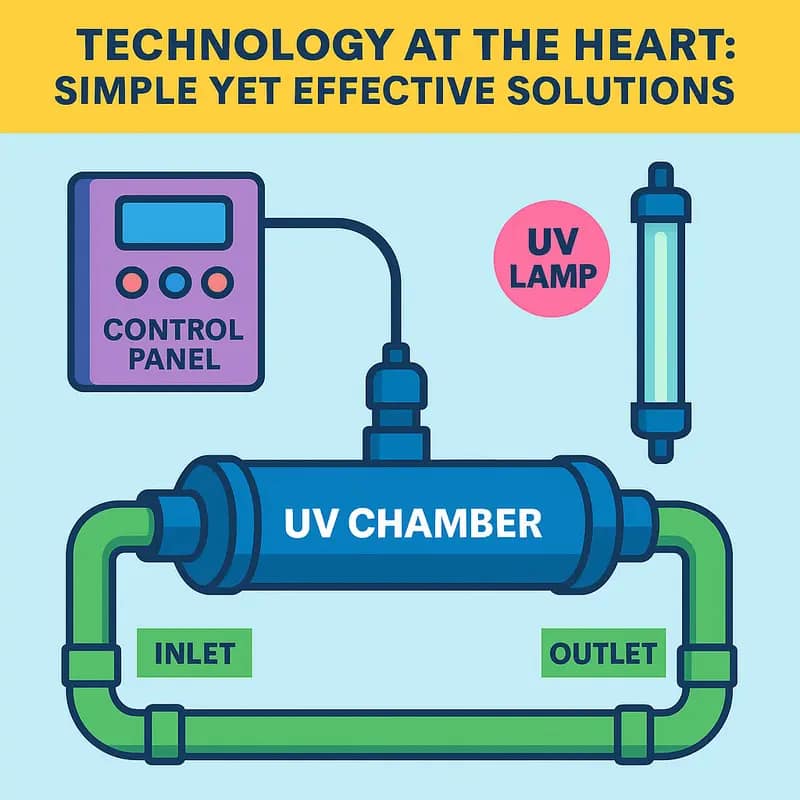
At the core of 1001 Fontaines’ success lies a carefully selected water treatment technology that exemplifies the delicate balance between effectiveness and operational simplicity. The system employs a multi-stage purification process that begins with basic filtration and culminates in UV disinfection, delivering safe drinking water while remaining manageable for local entrepreneurs.
The treatment process starts with sediment filtration, removing larger particles and suspended solids. This preliminary step protects downstream components while improving water clarity. Next, activated carbon filtration eliminates organic compounds, unpleasant tastes, and odors. The final purification stage utilizes ultraviolet light to neutralize harmful microorganisms, ensuring water safety without requiring complex chemical dosing systems.
This technological approach stands out for its ingenious simplicity. The system operates without sophisticated electronic controls or automated chemical feed systems that could pose maintenance challenges in rural settings. Instead, it relies on gravity flow and straightforward mechanical components that local operators can easily monitor and maintain with basic training.
Reliability was a crucial consideration in the technology selection. The system’s components are robust and sourced to withstand challenging environmental conditions while maintaining consistent performance. Regular maintenance procedures are streamlined and predictable, allowing entrepreneurs to develop routine schedules that prevent unexpected breakdowns.
Perhaps most importantly, the technology aligns perfectly with the economic incentives that drive water reuse revolution. The system’s energy efficiency and minimal consumable requirements keep operational costs low, enabling sustainable pricing for end users while maintaining profitability for operators. This technological foundation creates a virtuous cycle where reliable operation supports the business model, which in turn ensures consistent maintenance and quality service delivery.
The deliberate choice of proven, straightforward technology has enabled 1001 Fontaines to scale its impact across multiple regions while maintaining consistent water quality standards. This approach demonstrates how thoughtful engineering can address complex challenges through elegant simplicity rather than technological complexity.
Quality Assurance: Maintaining Standards at Scale
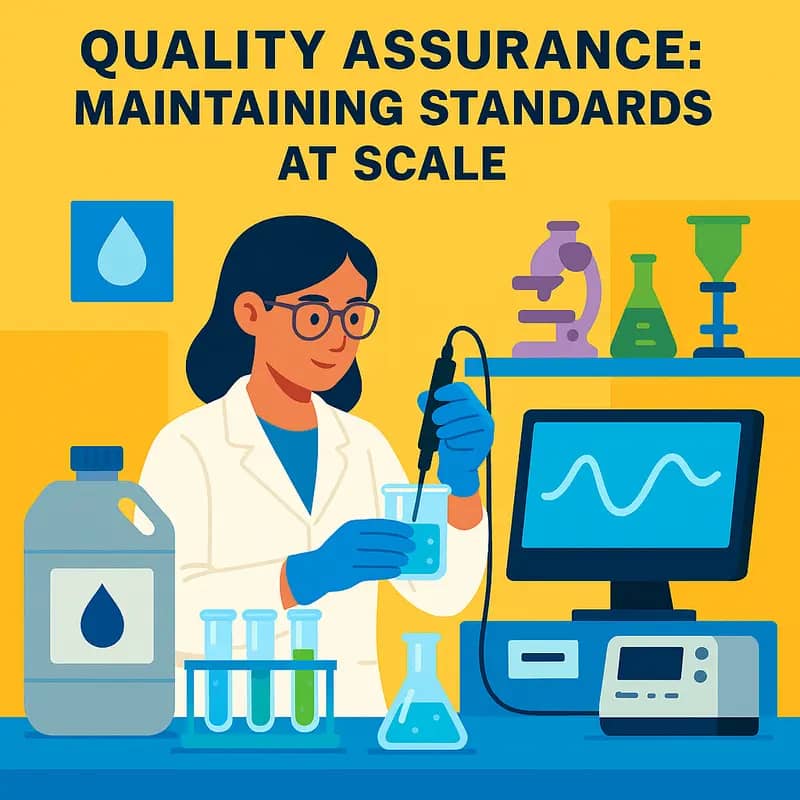
At the core of 1001 Fontaines’ success lies a robust quality assurance system that ensures safe drinking water across all operations. The organization implements a multi-layered monitoring approach that combines automated testing with human oversight at every critical control point.
Each water kiosk operates under stringent quality protocols that mirror international drinking water standards. Operators conduct daily tests for key parameters including turbidity, pH levels, and residual chlorine. These basic yet crucial measurements provide immediate feedback on treatment effectiveness. Monthly microbiological testing supplements these daily checks, with samples analyzed at certified laboratories for bacterial contamination.
Central to the quality control framework is a real-time monitoring system that transmits operational data from each site to regional hubs. This allows technical teams to quickly identify and respond to any deviations from quality parameters. The system helps maintain consistency while enabling rapid troubleshooting when issues arise.
Quality assurance extends beyond water testing to encompass the entire production process. Regular audits assess adherence to standard operating procedures, maintenance schedules, and hygiene protocols. Site operators receive continual training and certification to ensure they understand and can properly execute all quality control measures.
To maintain accountability and transparency, water quality data is meticulously documented and shared with stakeholders. This open approach helps build trust with communities while providing valuable metrics for improving operations. Independent third-party testing provides additional verification of water quality compliance.
The organization has also developed contingency protocols for quality incidents. If testing reveals any parameters outside acceptable ranges, clear response procedures guide operators through corrective actions. This systematic approach to quality management enables 1001 Fontaines to consistently deliver safe drinking water while scaling operations across multiple regions and countries.
Social Impact: Measuring Success Beyond Profits

The tangible social impact of 1001 Fontaines extends far beyond traditional business metrics, demonstrating how social entrepreneurship can create lasting change in underserved communities. Through rigorous monitoring and evaluation, the organization has documented significant improvements across health, economic, and environmental dimensions.
In terms of health outcomes, communities served by 1001 Fontaines have seen a 50% reduction in waterborne illness incidence, particularly among children under five years old. Regular water quality testing shows consistent achievement of WHO drinking water standards, while systematic health surveillance data indicates decreased medical expenses for families who previously relied on untreated water sources.
The economic multiplier effect has been equally impressive. Each water enterprise creates an average of five direct jobs while supporting dozens of indirect employment opportunities through distribution networks. Local entrepreneurs running these operations earn 2-3 times the regional median income, allowing them to reinvest in their communities. Women, who make up 60% of site operators, report increased financial independence and elevated social status.
Environmentally, the decentralized model has demonstrably reduced plastic waste from single-use bottles while maintaining a minimal carbon footprint through solar-powered operations where possible. Water extraction rates are carefully monitored to ensure aquifer sustainability, with comprehensive watershed management plans developed in partnership with local authorities.
Beyond these quantitative measures, qualitative assessments reveal transformative impacts on community resilience and social cohesion. School attendance rates have improved as children spend less time collecting water. Community surveys indicate heightened awareness of water safety and hygiene practices, creating lasting behavioral change.
Through careful documentation of these multidimensional impacts, 1001 Fontaines demonstrates how social enterprises can rigorously measure and validate their effectiveness while maintaining focus on their core mission. This data-driven approach to impact assessment has helped secure continued support from donors and partners while providing valuable insights for operational improvements and scaling strategies.
Scaling Strategies: From Village to Global Impact

1001 Fontaines’ remarkable scaling journey demonstrates how systematic expansion can amplify social impact while maintaining operational excellence. The organization’s growth strategy centers on a proven three-phase approach that has enabled successful replication across multiple regions.
The first phase involves careful market analysis and community selection. Rather than pursuing rapid expansion, 1001 Fontaines meticulously evaluates potential sites based on water needs, entrepreneurial potential, and community engagement. This targeted approach ensures resources are directed where impact can be maximized.
Learn how impact investing can revolutionize water access
In the implementation phase, the organization leverages standardized yet adaptable systems. Their entrepreneur training program combines technical water treatment expertise with business management skills. This dual focus creates capable local operators while establishing sustainable micro-enterprises. The standardized approach allows for quality control across locations while permitting necessary customization for local contexts.
The third phase focuses on building regional support networks. By clustering projects geographically, 1001 Fontaines creates economies of scale in maintenance, quality control, and knowledge sharing. These networks enable entrepreneurs to support each other while providing efficient oversight and technical assistance.
Crucially, the organization maintains rigorous quality standards through centralized monitoring systems. Real-time data collection on water quality, production volumes, and financial metrics enables swift identification and resolution of issues. This oversight ensures consistent service delivery while generating valuable insights for future expansion.
The success of this scaling model lies in its balance between standardization and local adaptation. While core processes remain consistent, the organization empowers local entrepreneurs to tailor their operations to community needs. This approach has enabled sustainable growth while maintaining the quality and impact that define 1001 Fontaines’ mission.
Investment Landscape: Opportunities and Returns

The investment potential in 1001 Fontaines’ model presents a compelling case for both financial returns and social impact. The organization’s approach combines sustainable business practices with measurable social outcomes, creating an attractive proposition for impact investors seeking dual returns.
Financial performance metrics demonstrate the model’s viability. Each water station achieves operational break-even within 12-18 months, with profit margins ranging from 15-20% after stabilization. The decentralized entrepreneurship structure keeps overhead costs low while enabling scalable growth. Return on investment typically ranges between 8-12% annually, competitive with traditional infrastructure investments.
Beyond pure financial returns, 1001 Fontaines delivers quantifiable impact metrics that appeal to ESG-focused investors. Each station serves approximately 1,000 households, providing safe drinking water at 1/3 the cost of alternatives. Health impact studies show a 50% reduction in water-borne illness incidence among beneficiary communities. The model also creates sustainable local employment, with each station supporting 3-5 direct jobs.
Investment opportunities exist across multiple levels. Direct station funding through microfinance enables local entrepreneurs while providing steady returns. Larger institutional investments support regional expansion and technological upgrades. The organization’s innovative approach to combining philanthropy with sustainable business models provides a blueprint for addressing water access challenges.
Risk mitigation strategies include rigorous entrepreneur selection, standardized operational procedures, and continuous quality monitoring. The organization maintains a default rate below 3% on entrepreneur loans. Regular impact assessments and financial audits ensure transparency and accountability to investors.
As water scarcity intensifies globally, the model’s proven ability to deliver both social impact and financial sustainability positions it favorably in the impact investing landscape. The organization’s track record of successful scaling across multiple countries further validates its investment thesis.
Future Vision: Innovation and Adaptation

As 1001 Fontaines propels itself into the future, technological innovation stands at the forefront of its evolution. The organization is developing an integrated digital platform that will revolutionize how local entrepreneurs manage their water stations, incorporating real-time monitoring and predictive maintenance capabilities to ensure consistent water quality and operational efficiency.
A groundbreaking aspect of this technological advancement is the implementation of blockchain-based quality assurance systems. These systems will create an immutable record of water quality tests, treatment processes, and distribution patterns, offering unprecedented transparency to stakeholders and consumers alike. This innovative approach to water management mirrors successful implementations detailed in ‘The Best Insights of the Internet of Water’.
The enterprise is also exploring advanced filtration technologies that can operate with minimal energy requirements, making water treatment more sustainable and cost-effective for rural communities. These innovations include solar-powered purification systems and gravity-fed filtration methods that can function reliably in areas with limited infrastructure.
Perhaps most significantly, 1001 Fontaines is developing a scalable knowledge transfer platform. This digital ecosystem will enable rapid deployment of best practices across different regions, allowing successful operational models to be replicated efficiently while accounting for local variations in water quality, cultural preferences, and economic conditions.
The organization’s adaptive strategy extends beyond technology to include climate resilience planning. New water station designs incorporate features that protect against extreme weather events, while water source diversification strategies help ensure consistent supply even during prolonged dry seasons.
Furthermore, 1001 Fontaines is pioneering the integration of microfinancing mechanisms with water distribution systems. This innovation will allow for more flexible payment options for consumers while ensuring the financial sustainability of local water entrepreneurs. The model includes features for tracking customer payment patterns and usage habits, enabling entrepreneurs to optimize their service delivery and business operations.
Final words
1001 Fontaines exemplifies how social entrepreneurship can create lasting change in water access. Their model proves that empowering local entrepreneurs while leveraging appropriate technology creates sustainable solutions to water challenges. The success metrics are clear: improved community health, economic growth, and operational sustainability. As the organization continues to scale, their approach offers valuable lessons for water sector stakeholders worldwide. The combination of local ownership, quality control, and financial viability demonstrates that social impact and business success can coexist. For water entrepreneurs and investors, 1001 Fontaines provides a blueprint for creating meaningful change while building sustainable enterprises. Their journey from a single Cambodian village to serving millions across multiple countries shows that with the right model, local water entrepreneurship can transform communities while creating valuable business opportunities.
Get the Water Sector’s Pulse weekly for free: subscribe to my Newsletter ➡️
About us
I offer (hopefully!) unique and insightful coverage of the water industry by combining my hard-earned technical expertise with engaging storytelling. If you haven’t yet, it might be time for you to subscribe to the podcast, the youtube channel and/or the newsletter!
(I’d do it if I were you, but I’m slightly biased 😉)
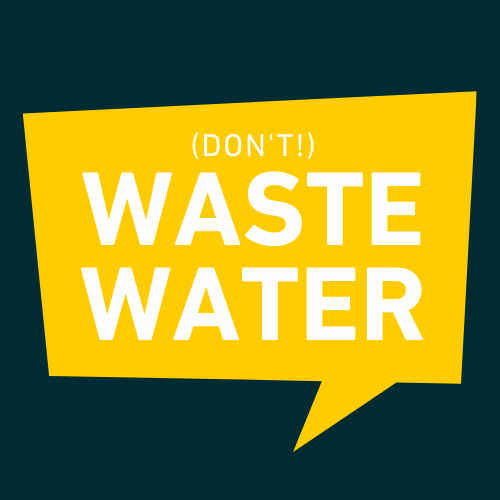
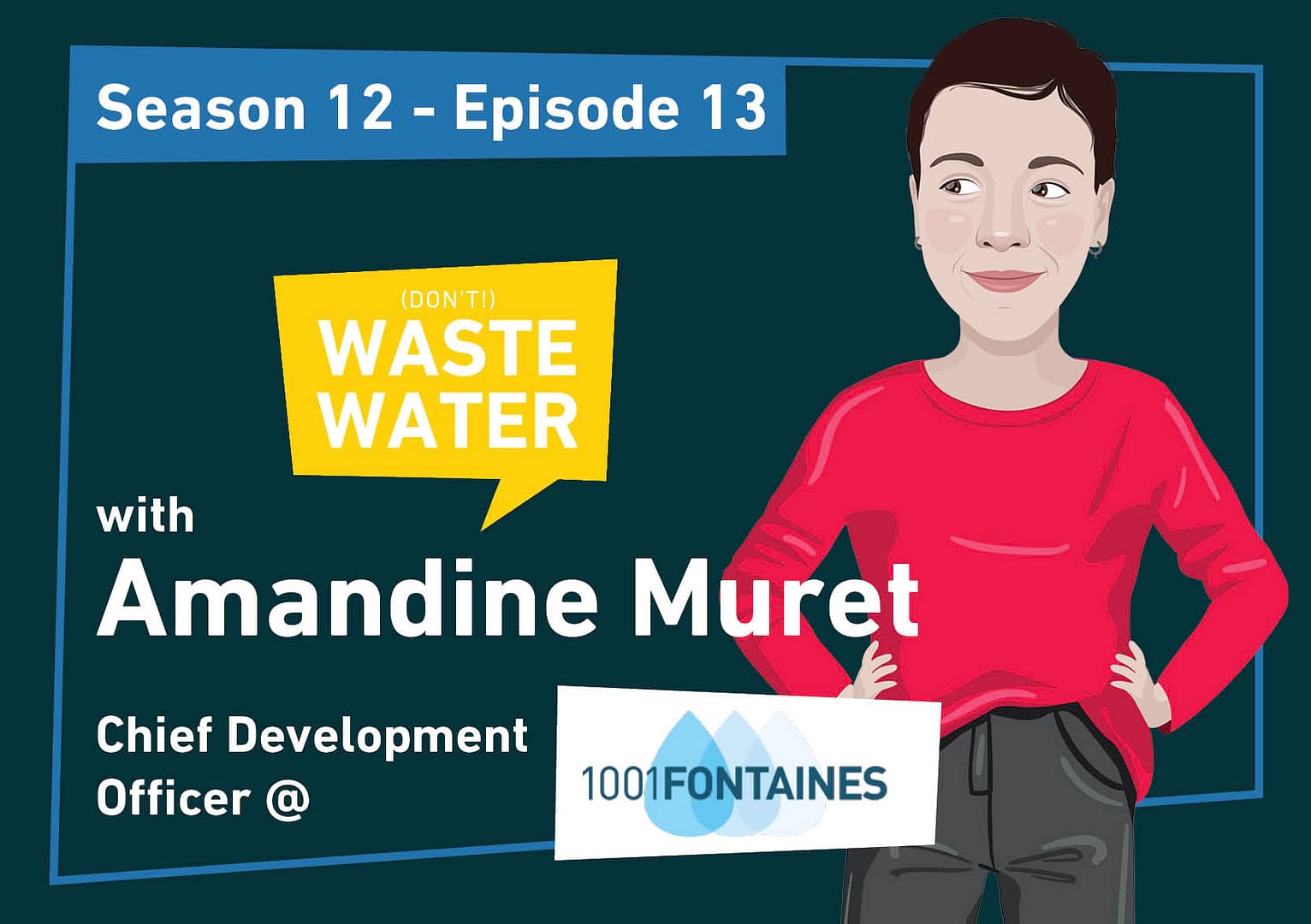
1 thought on “1001 Fontaines: Engineering Sustainable Water Access Through Social Entrepreneurship”
Comments are closed.